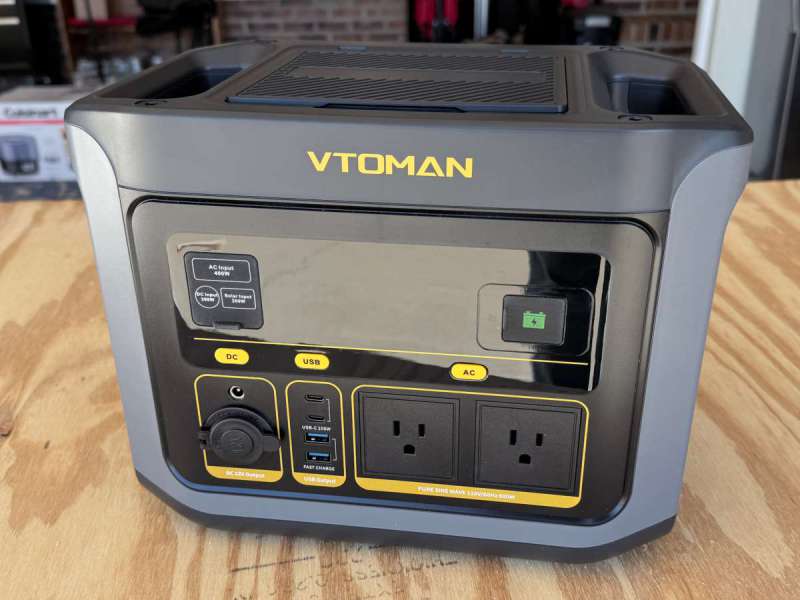
REVIEW – Hurricane Helene passed through town last fall and left us without any power. At times like this, it’s important to have a backup source of power for things like running a fan, turning on the TV to get local news, or recharging anything with a battery. I’m testing out a medium-sized power station, the FlashSpeed 600, from VTOMAN to see if it’s ready for the job.
⬇︎ Jump to summary (pros/cons)
Price: $499.99
Where to buy: VTOMAN
What is it?
The VTOMAN FlashSpeed 600 is a portable power station that can provide 600 watts of power via USB and AC and can be recharged via AC, DC, and solar.
What’s included?
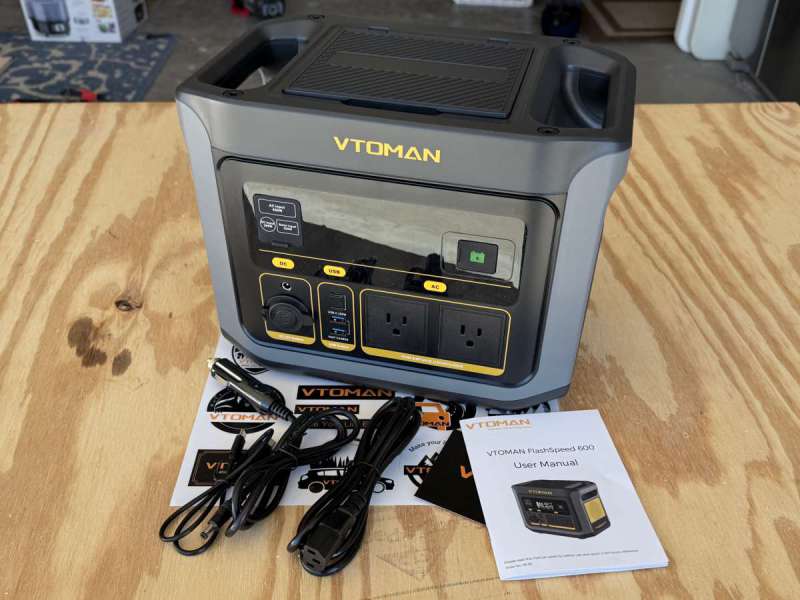
- Power station
- AC power cable
- DC power cable
- USB-C cable
- USB-A to USB-C cable
- User manual
- Sheet of stickers!
Tech Specs
- Output: 600W
- Weight: 15.9 lb
- Dimensions: 12.4 x 9.5 x 7.9 inches
- Inputs: AC, DC, and Solar (Anderson)
- Outputs: DC, USB-C (Power Delivery), USB-A, AC
- Battery: 499 Wh
‼️ This product uses a high-voltage lithium battery and poses a fire risk. Never leave the battery unattended while charging, and always disconnect the charger once the battery is full. Learn more about lithium battery safety here.
Design and Features
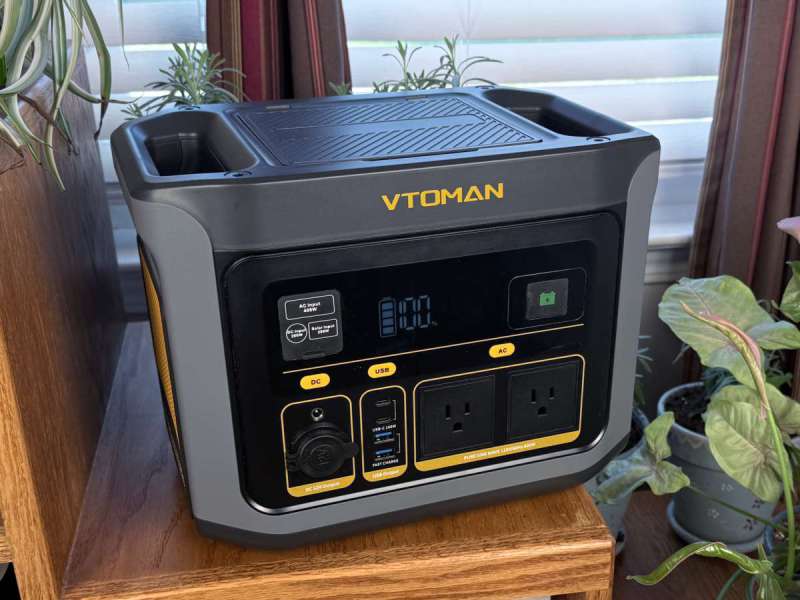
The VTOMAN FlashSpeed 600 power station looks like a small cooler with a pair of handles on top. The front has the display and the inputs and outputs. Either side has a grill for airflow, and the back has a small light. The top of the 600 has a small compartment for storing the cables, an absolutely brilliant idea, and the bottom four rubber feet. This gadget is made of black plastic and has yellow highlights. It’s not a thing of beauty, but it is a thing of practicality. I like this design.
Assembly, Installation, and Setup
Inside the box, I found custom foam inserts protecting the VTOMAN FlashSpeed 600. I removed all the protective packaging and read through the manual.
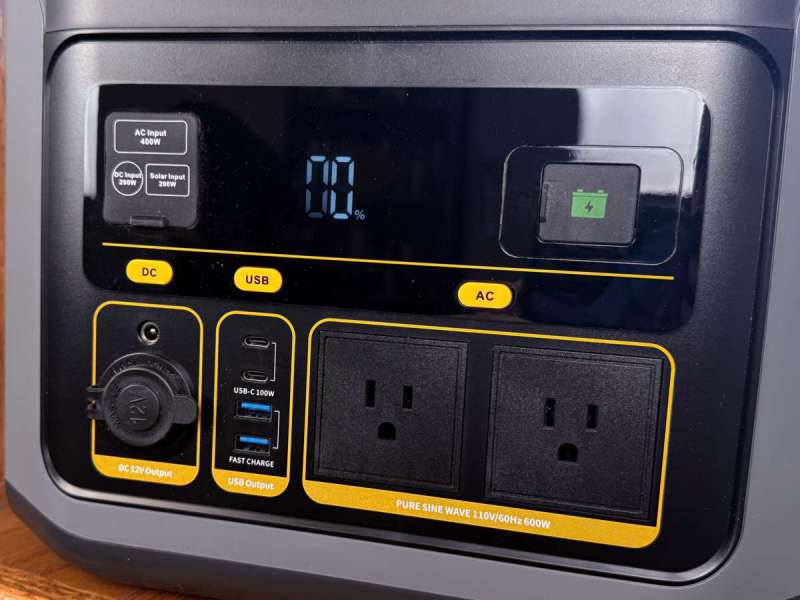
The front of the 600 has five different types of inputs and outputs. Along the bottom, there are clearly marked areas for DC output, USB output, and AC output. Each area has a button that activates its ports and a bold yellow border. Why is this important to note? I recently reviewed the VTOMAN FlashSpeed 300 power station, and it failed to clearly mark these areas, making it easy to mistakenly plug the DC charger into the output port. I am very happy to see that whoever designed the 600 was more careful.
Here are the outputs:
- The DC area has two ports, the standard DC5521 12V port and a car charging port that looks like the old cigarette lighter ports.
- The USB area has four ports, two USB-C ports that support power delivery (PD) and two USB-A ports.
- The AC area has two standard AC outlets that can support 600W of continuous power and 1200W of peak power.
This power station can also function as a UPS and be chained together with a second battery.
[sv slug=”battery”]
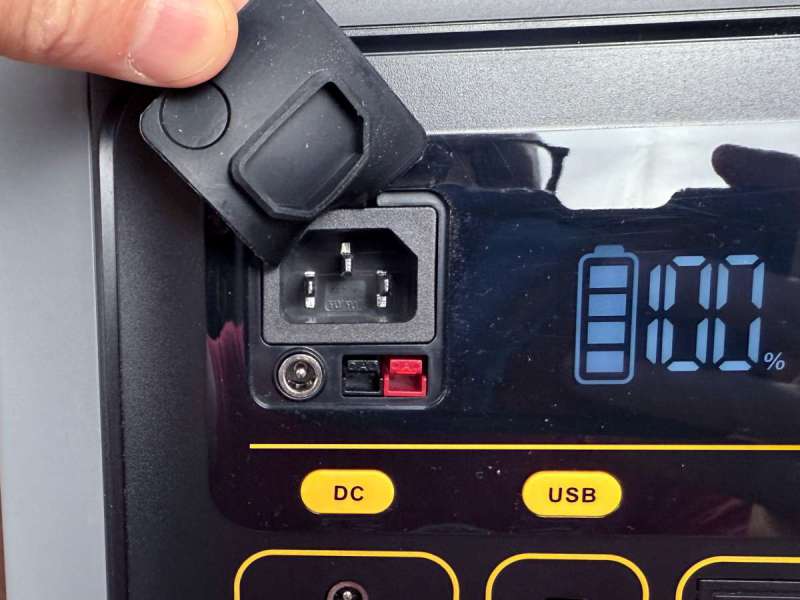
The upper left has a rubber cover that protects the three input ports, an AC input that uses the included power cable, a DC input that uses the included car charger cable and can also be used with some solar panels, and an Anderson input that can be used with other solar panels.
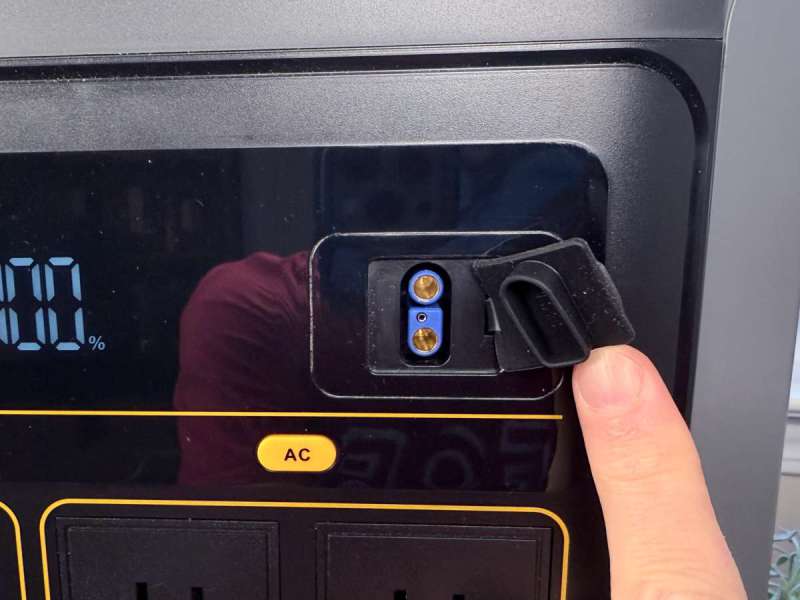
The upper right has a smaller rubber cover that protects a battery expansion port that allows for daisy chaining an extra FlashSpeed battery. VTOMAN did not include one of these for testing, but I imagine it would be very handy when trying to power something like a refrigerator during an extended power outage.
Between the inputs is a monochromatic display. Pulling off the protective covering did not leave behind any sticky residue, another problem that I had with the 300. The display shows the charge remaining in the battery, the input and output watts, the estimated time before the battery runs out (based upon current usage), which buttons are pressed, and indicators for the fan and any problems. It’s a simply display, but it does exactly what it needs to.
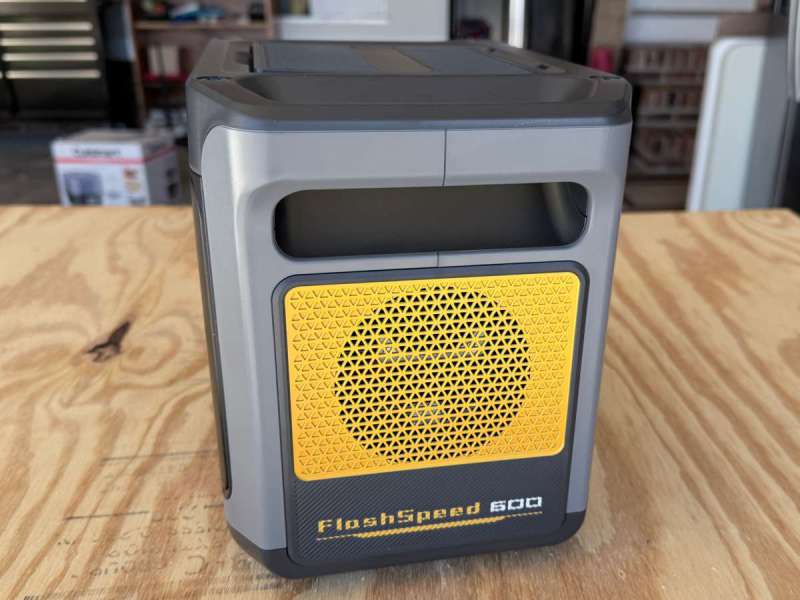
Like all power stations, the VTOMAN FlashSpeed 600 power station has an internal fan that automatically turns on to keep things cool when a certain level of power is used. The ends of the 600 have yellow grills where the air passes through.
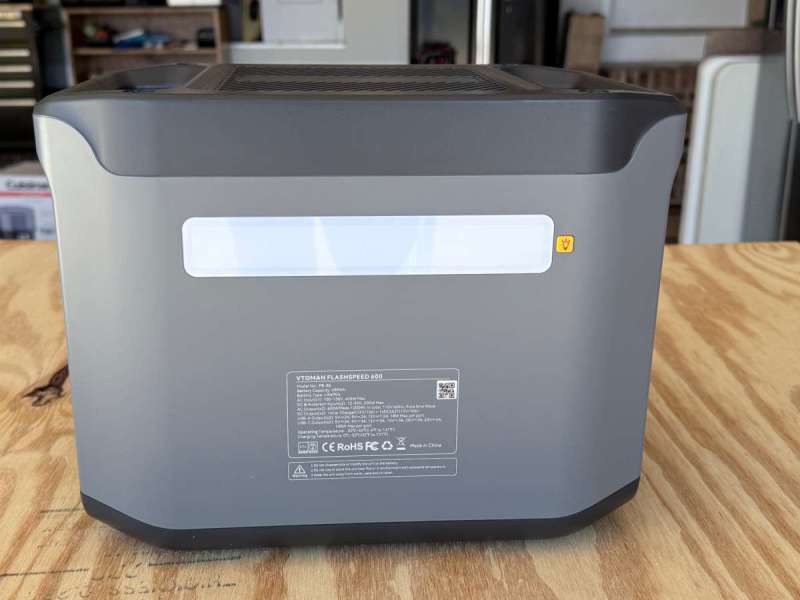
The back has a small button and a light. While it works fine, I wish they had found a way to put this light on the front of the 600. If it’s dark and I’m struggling to see where to connect cables to the 600, a light on the back isn’t the most helpful location. Each press of the button cycles the light through its five settings: low, medium, high, steady blink, and SOS.
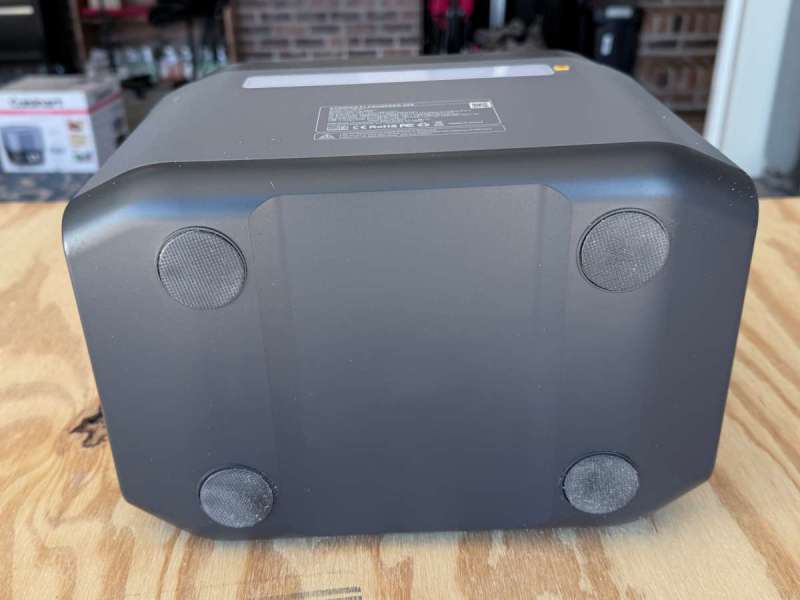
The bottom has four pads to help keep the 600 in place.
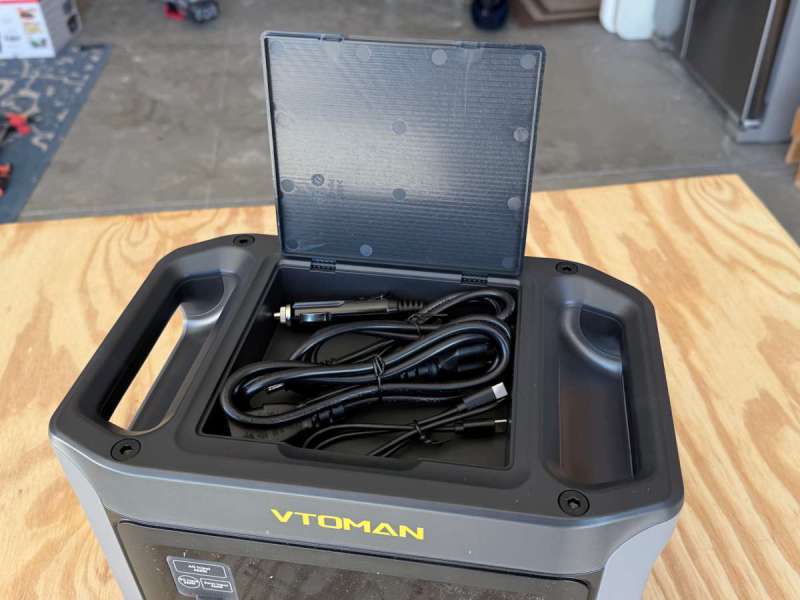
The top has a small storage container that is perfect for storing cables, an idea that I really like. It’s not quite big enough to store all the cables that come with the 600, but I think I can store the ones I use most, the AC power cable and the USB cables.
Performance
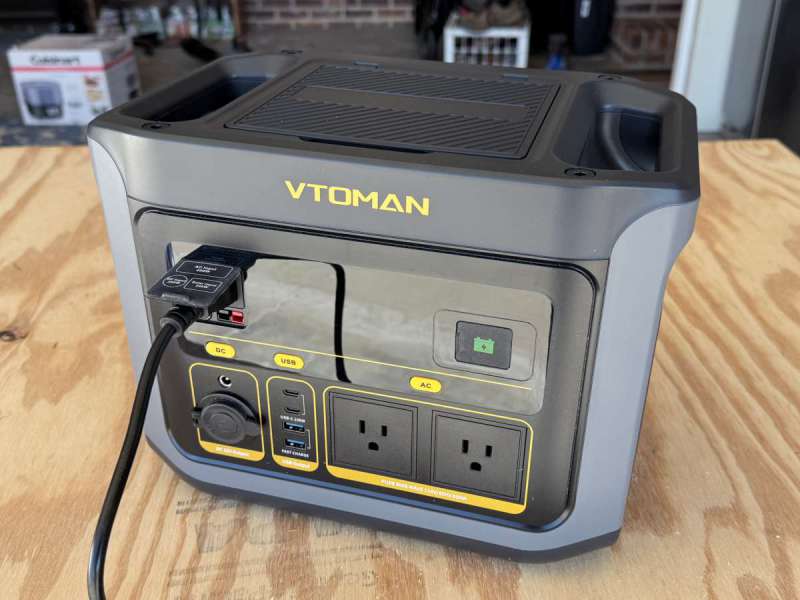
The first thing I did was charge the VTOMAN FlashSpeed 600 power station to full power. The name “FlashSpeed” indicates that the 600 is designed to charge quickly, and the manual says it can reach 80% with only one hour of charging. When I plugged in the AC power cable, nothing happened. Reading through the manual again, I realized that I needed to turn the power station on first, but there’s not really an “on” button anywhere. Instead, I have to press any of the output buttons—it doesn’t matter which one—to turn on the 600, which allows it to begin charging. Wow, what a bizarre design choice. I have to use the output buttons in order for the inputs to work. I said this in my review of the 300, and I’ll say it again here: “I think VTOMAN should hire a human interface expert to help them redesign the entire interface experience for their users.” Once I figured out this quirk, I found that the battery arrived 63% charged. It quickly charged all the way up to 100%, at which point it stopped charging automatically. Now it’s ready for testing!
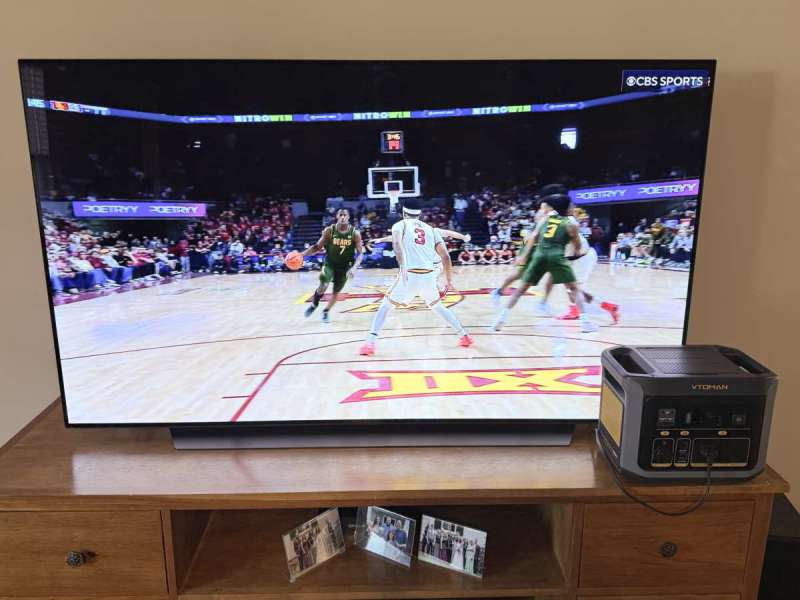
For my first test, I powered my 65-inch LG TV in my living room. If power were out and I was concerned about bad weather, this is one way I could get local weather updates. The TV took just over 200 W of power, and it ran fine.
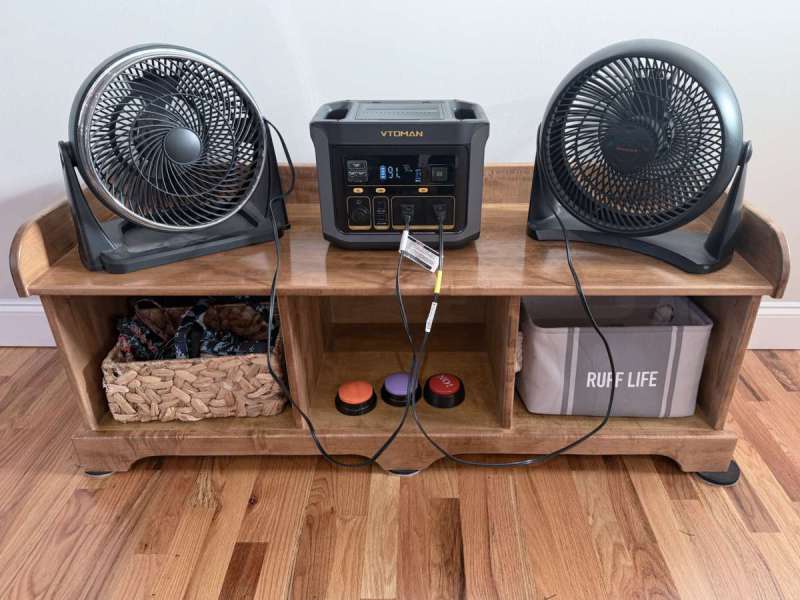
For my second test, I powered a pair of fans. If I lost power during the summer, I might want these fans running to keep me cool. Together, they took just over 90 W of power, and the 600 passed this test with ease.
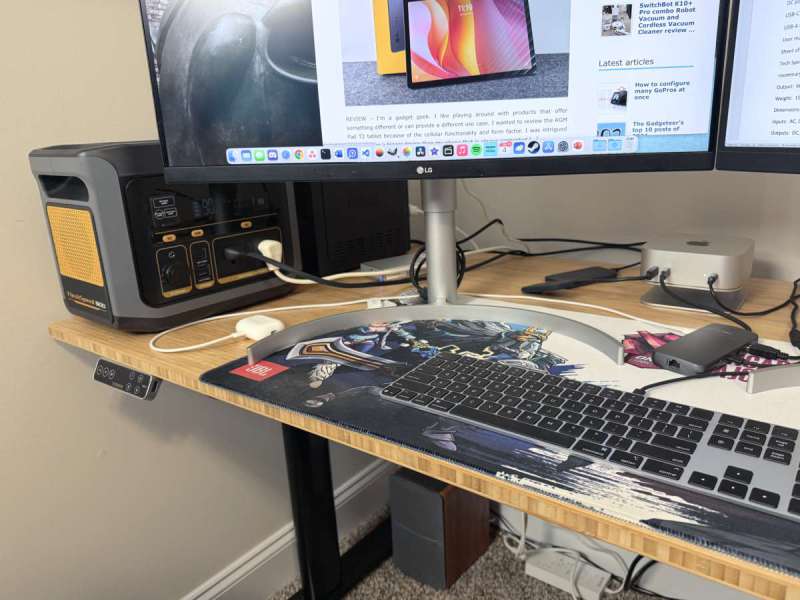
For my final test, I decided to power my Mac mini M4 and one of my 27-inch LG 4k monitors. They only used around 40 W while I was doing light tasks, like editing this document and listening to Apple Music, and ran smooth as butter on the 600.
At 600 W, I find this power station to be at an interesting power level. If I just need to recharge our phones, it will certainly work, but it’s overkill. If I need to keep my refrigerator powered for a few days or want to use devices that draw lots of power, like coffee pots and hot water kettles, it’s not powerful enough. I think VTOMAN FlashSpeed 600 is designed to be an all-around power station for those devices and gadgets in our house that fall in between these extremes, and this is a role that it fulfills well.
VTOMAN sells several bundles with this power station that include things like a solar panel and/or an extra battery; these are handy but also expensive. VTOMAN also sells other power stations that have both larger and smaller batteries.
Final thoughts
Hurricane Helene showed us that it’s possible to lose power at unexpected and inconvenient times. Having a power station or three on hand is great way to keep phones charged, power fans and TVs, and, if large enough, even power refrigerators or freezers. The VTOMAN FlashSpeed 600 is a medium-sized power station that is more than capable of providing power for a wide range of gadgets and appliances. I found it was easy to use, once I figured out its weird interface quirks, and powered several devices around my house. I think this power station could be a big help to anyone who has an unanticipated need for power.
What I like about the VTOMAN FlashSpeed 600 power station
- Convenient form factor for carrying and storing
- Clearly marked inputs and outputs
- 600 W of power!
What needs to be improved?
- Redesign the interface so that output buttons don’t turn on the inputs!
Price: $499.00 or $569.99
Where to buy: VTOMAN or Amazon
Source: The sample for this review was provided free of charge by VTOMAN. VTOMAN did not have a final say on the review and did not preview the review before it was published.
Check out these other reviews!
- BLUETTI AC180P Portable Power Station 1,440Wh capacity review
- PECRON E3600LFP Portable Power Station review


